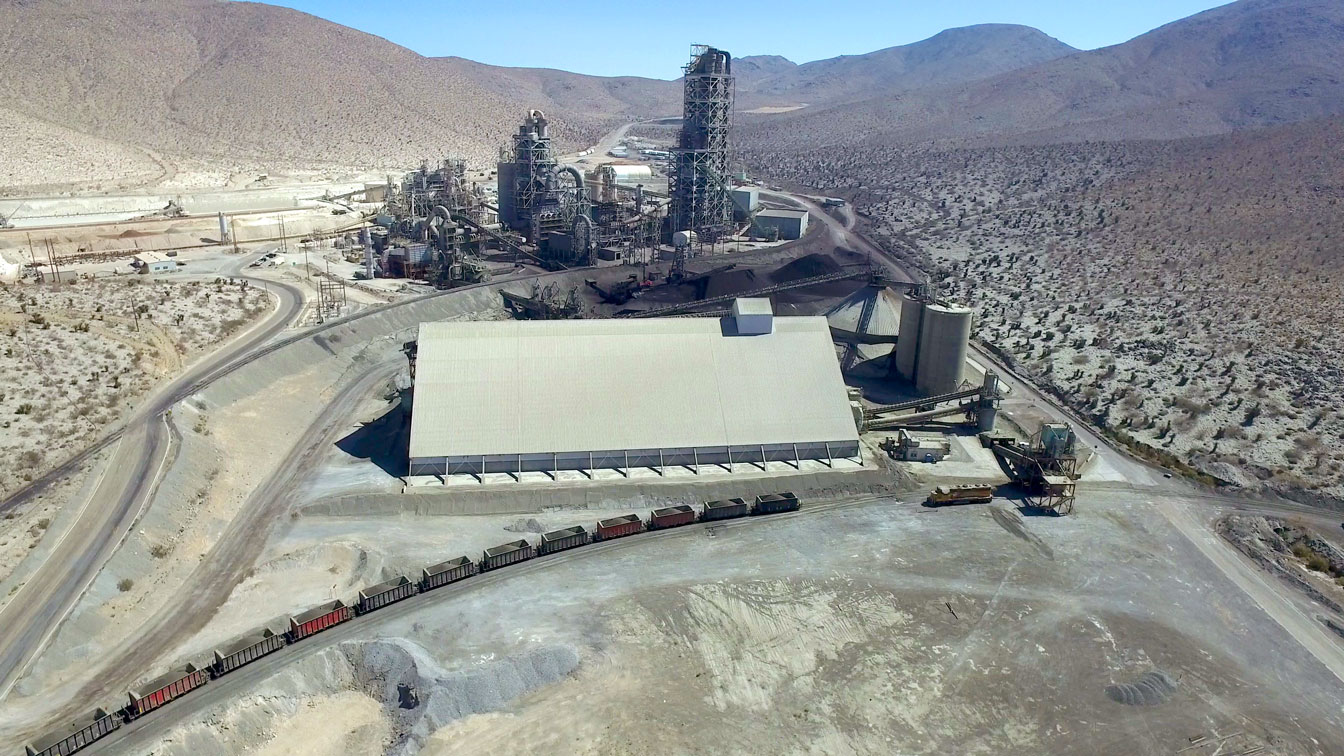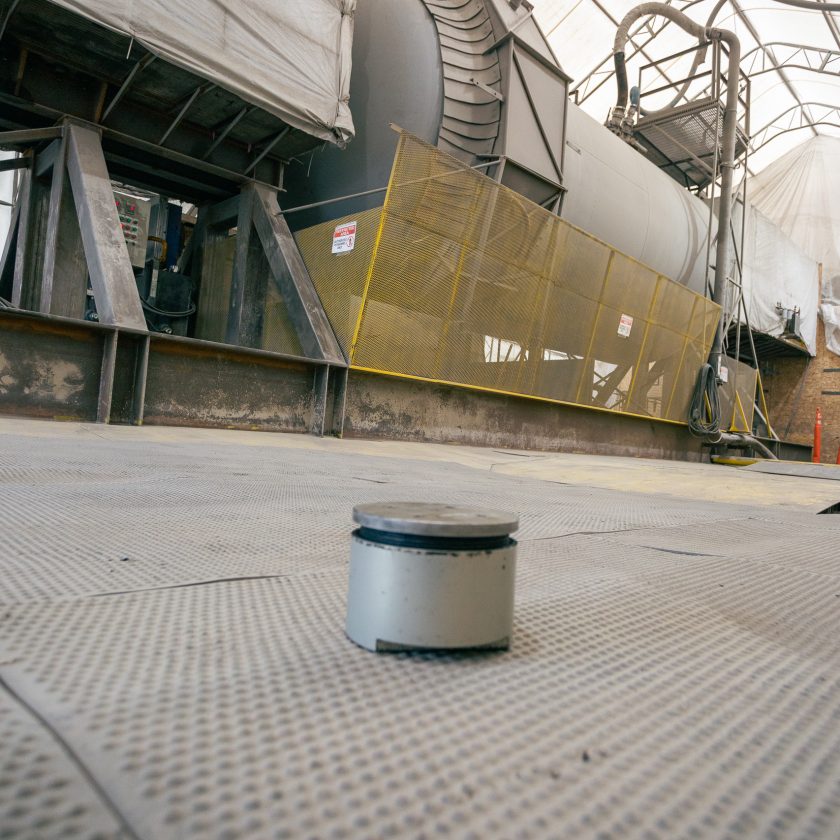In The Face Of Accelerating Climate Action, Achieving Net-Zero CO2 Concrete Is Not Optional; It Is Essential.
By Jonathan Rowland
Climate change has been back in the headlines of late, after a new UN report was described as a “code red for humanity” by the UN secretary general. According to the report, the past 50 years have seen global surface temperatures rise faster than in any other equivalent period in the last two millennia. This warming is “affecting many weather and climate extremes in every region across the globe” and is unequivocally attributable to human influence.
Against this backdrop, I interviewed Vicente Saiso, head of global sustainability at CEMEX, about the company’s commitment to reducing its carbon footprint. This includes targets to deliver net-zero CO2 concrete by 2050 and to reduce net specific CO2 emissions from cement production by 35% from a 1990 baseline by 2025 and by more than 40% by 2030. In practical terms, this means reducing CO2 emissions from about 801 kg CO2/t of cementitious material in 1990 to 520 kg CO2/t by 2025 and below 475 kg CO2/t by 2030.
These targets are “built on a detailed plant-by-plant roadmap,” explained Saiso. “The 2030 target is consistent with the most recent climate pathway available for our industry – the Well-Below 2°C scenario. We plan to complete the validation of the target with the Science-Based Targets initiative (SBTi)1 before the year’s end. Our goal is to validate not just direct emissions but also indirect electricity emissions, as we also have a detailed strategy to reduce our purchased electricity CO2e impact by considerably increasing the share of power from clean energy sources.”

The CEMEX Victorville cement plant in California is anchoringa project to develop carbon capture technology.
Reduction Progress
The company is on the right path: as of 2020, it has achieved an almost 23% reduction in specific net CO2 emissions across its organization. The company’s European operations are leading the way, having already achieved close to the 35% target in 2020.
“The levers to mitigate our CO2 footprint are, in general, the same in all regions,” continued Saiso, listing measures such as the use of alternative fuels with high biomass content, hydrogen injection, low temperature and low CO2 clinker, decarbonated raw materials and lowering clinker factor. Adopting these measures was however “possible at a faster pace” in Europe than elsewhere, due to a range of supportive factors including:
- Regulations that prioritize efficient use of resources and promote circular economy.
- Economic incentives for fuel switching to cleaner alternatives, which in many cases result in negative energy costs.
- Greater market acceptance of blended cements and consumer demand for low-carbon products.
- Significant government support for research and testing of cleaner technologies.
- Carbon emission regulations, resulting in a predictable carbon price.
The company’s ambition for its European operations is now to reach a 55% reduction from the 1990 baseline. “This more ambitious goal is supported by a detailed roadmap for each installation and is aligned with the recently-announced Fit for 55 package under the European Green Deal,” added Saiso.2 The experience in Europe is also motivating change elsewhere, as the methods and strategies being deployed “have shown to be successful.”
Fuel Switching
That is not to say the sailing ahead will be plain. When it comes to fuel switching, for example, CEMEX has several decades’ experience in the responsible sourcing, processing, storage and use of alternative fuels. The company is therefore confident that co-processing of residues from other sectors in its cement plants can contribute to overcoming challenges such as climate change, waste management and fossil fuel depletion.
Nonetheless, explained Saiso, “in the different regions in which we operate, we face barriers that sometimes hinder our increased use of alternative fuels, including waste availability and quality, infrastructure and logistics, co-processing regulations and permitting issues, market dynamics, the economics of waste-derived fuels, and technical limitations.”
Another challenge in the U.S. is the lower acceptance of blended cements. “The United States has the highest clinker-to-cement ratio in the world at 89%,” said Saiso. This compares to a global industry average of 76% and 77% in the EU. In other regions, the average is even lower. For example, in India it is 68% and in Latin America, 71%. “The low penetration of blended cements into the U.S. market remains a barrier to reducing our CO2 emissions. That is why we have developed a strategy to promote and increase the market share of blended cements, but customer acceptance and proper building codes and product specifications will also be crucial in this regard,” Saiso said.
More positively, the CEMEX Victorville plant in California is anchoring a project to develop carbon capture technology, as well as considering cost-competitive solutions to completely close the current carbon loop. The project is the recipient of a U.S. Department of Energy grant and is being led by RTI International, a non-profit research institute, with UK-based carbon capture company, Carbon Clean,3 and the Oak Ridge National Laboratory also part of the consortium, alongside CEMEX.
“The goal of the consortium is to significantly increase efficiencies and value in our overall building material manufacturing process, while significantly reducing our CO2 footprint through technological upgrades,” explained Saiso. “Specific objectives also include the development, optimization and scale-up of specific CO2 capture process components, as well as the incorporation of next-generation non-aqueous solvents. Integration of low-cost, modular carbon capture technology with the Victorville plant is also planned, together with subsequent cost evaluations and technical considerations for the transformation of captured CO2 into new marketable products.”
Hydrogen Injection Technology
CEMEX is also rolling out hydrogen injection technology. The hydrogen, which is generated onsite, is injected into the kiln with the rest of the fuel mix and enables the plants to operate at higher alternative fuel substitution levels, as well as significantly improving thermal efficiency.
“Deployment of hydrogen injection in Europe and Egypt is complete and we are working on a gradual implementation in the rest of our cement plants, including in the US, Mexico and the South, Central America and the Caribbean region (SCAC). We are also evaluating other emerging hydrogen technologies with plans to pilot some of them this year in Mexico and SCAC installations,” said Saiso.
In Europe, CEMEX is part of the second stage of the Low Emissions Intensity Lime and Cement (LEILAC) project, which aims to implement and commercialize technology to capture process CO2 emissions.4 The company is also pioneering the integration of renewable electricity into cement production. Since 2019, 100% of the company’s electricity in the UK has come from renewable sources, a feat repeated in 2020 in Poland.
Elsewhere, this year the company expects to commission a 41-MW solar project in the Dominican Republic, which will supply the company’s cement operations, as well as a 4.5-MW waste heat recovery plant at the APO cement plant in the Philippines. By 2030, CEMEX expects clean energy sources to provide 40% of its total electrical consumption.
“CEMEX recognizes climate action as the biggest challenge of our lifetime and progress on this front will differentiate players in the industry,” said Saiso. “Society has been escalating its demands for climate action over the past few years, but the pandemic has triggered calls for even more aggressive action, pushing society, governments, and the private sector to accelerate climate action. Over the last year, governments around the world have responded with ever more ambitious climate action targets, as well as an unprecedented amount of green fiscal stimulus to aid the transition to a low carbon world. We welcome these recent developments and world initiatives, and acknowledge that our industry has an important role to play in decarbonization.”
As to whether net-zero CO2 concrete globally is actually possible, the CEMEX sustainability chief was clear: “We need to be there. There is no other option.”
Notes
1. Part of the World Resources Institute’s Center for Sustainable Business, the SBTi supports companies in making emissions reductions and net-zero targets that are in line with climate science. Its team of experts provide companies with independent assessment and validation of targets with the aim of ensuring targets translate into action consistent with achieving a net-zero world by no later than 2050. For more information: https://www.wri.org/initiatives/science-based-targets
2. Launched in July 2021, Fit for 55 is a set of legislative proposals from the European Commission that aim to ensure the EU meets its goal of reducing carbon emissions by 55% by 2030. For more information: https://www.consilium.europa.eu/en/policies/fit-for-55/eu
3. Carbon Clean patented low-cost carbon capture technology has been proven at scale at sites in the UK, USA, Germany, Norway and the Netherlands, and is currently in use at the world’s largest industrial-scale carbon capture and utilization plant in Tuticorin, India. For more information: https://www.carbonclean.com/
4. For more information on LEILAC 2: https://www.project-leilac.eu/leilac2-project



